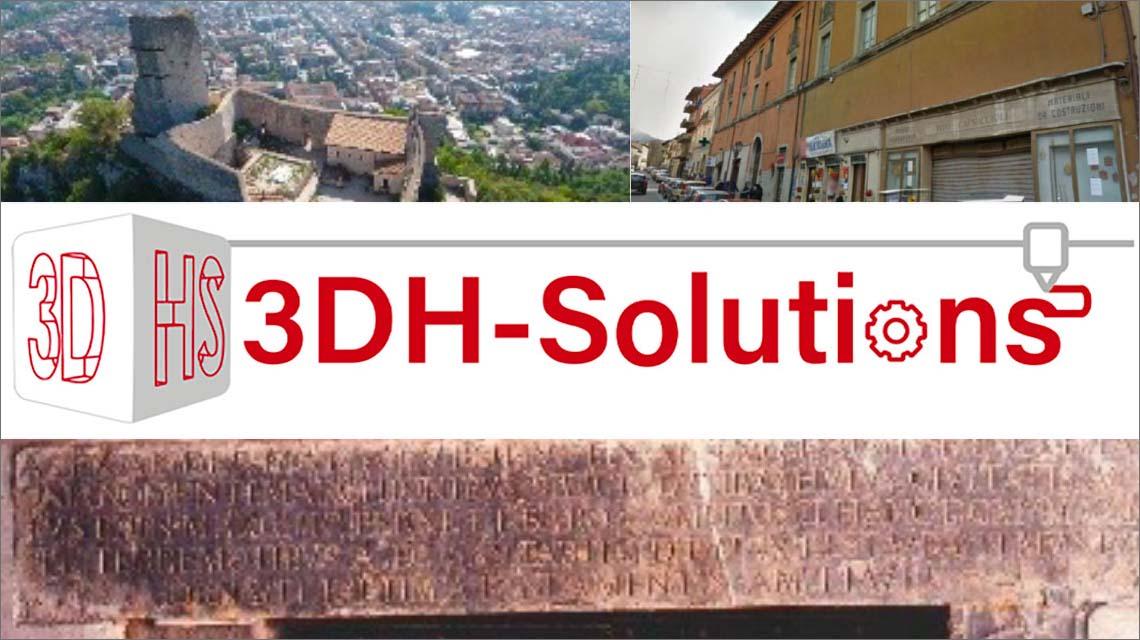Italian National Agency for New Technologies, Energy and Sustainable Economic Development

Cultural heritage: From enea 3d printing and nanomaterials to repair damaged monuments
The first interventions to be conducted in Rocca Janula in Cassino (Frosinone) and Palazzo Orsini in Amatrice (Rieti), partly wiped out by the 2016 earthquake
Cutting-edge solutions like 3D printing and nanomaterials to integrate missing parts of buildings and sculptural parts damaged by time or severe phenomena, while respecting the reversibility, durability and recognisability of the materials. These are some of the innovative technologies of the project 3DH-solutions [1] for the preservation and restoration of cultural heritage, funded by the Lazio Region, which comprises research institutions like ENEA, Roma Tre University (coordinator) and University of Cassino and Southern Lazio and companies specialized in restoration and 3D printing like Araknia Labs Srl and Nadir Srl.
The first interventions will be conducted in Rocca Janula in Cassino (Frosinone) and in the Palazzo Orsini in Amatrice (Rieti).
"Natural phenomena, anthropogenic factors as well as catastrophic events and extreme weather events can deteriorate the artefacts and buildings exposed to an outdoor environment", explained Rosaria D'Amato, researcher at the ENEA Laboratory of Micro and Nanostructures for Photonics. "This deterioration - she continued - can affect both their aesthetics and structural stability, making them not accessible to the public. The reconstruction of architectural or structural elements in a building can help preserve it for the community to enjoy”.
In the last decade, the use and experimentation of 3D printing-based technology have grown significantly in various sectors of application, with interesting potentials especially in cultural heritage: not only for the reconstruction of art works but also to make museums interactive and enable digital discovery by the public and as an object of study and research. 3D printing can in fact provide physical reproductions with a high accuracy of details. Furthermore, compared to traditional techniques, it offers specific advantages, like the possibility of duplicating elements of any geometry and complexity, guaranteeing a good weight and mechanical performance ratio, particularly important in historic buildings in seismic areas or with structural problems. In addition, it ensures the possibility of using environmentally sustainable materials and a reduction of the time and costs required by restoration.
The project focuses on two particular applications: the partial "rebuilding" of regular masonry walls and the reconstruction of decorative elements, such as cornices, decorations of historic buildings or battlements, which represent one of the most widespread and common types of deterioration of the Italian historic building heritage.
“We start by studying the architectural asset through a survey and a digital model. The combination of a three-dimensional survey and 3D printing is, in fact indispensable to understand its every detail and gap. Furthermore, during the reproduction of the missing parts, it allows you to correct any errors and make the necessary changes to ensure an optimal match among its parts, which are a more precise and faster alternative to products manufactured with manual processes ”said D'Amato.
Another important and innovative element of the project is the testing of new nanomaterials with which to develop the integrative elements, always through 3D printing. Accurately chosen ceramic nanoparticles can increase the mechanical properties of the matrix in which they are dispersed and give the material interesting functional properties with high added value, such as hydrophobicity, self-cleaning and biocidal abilities but also the ability to break down atmospheric pollutants.
Rocca Janula di Cassino is a 10th century medieval fortress and one of the most significant monuments for the local community and the Terra Sancti Benedicti. The monument, which already underwent intense restoration works, still has a tower with significant structural gaps. The goal is to test the possibility of partial reconstruction of some volumes with the insertion of 3D printing elements.
The Palazzo Orsini, located in Amatrice, was built in the 17th century and was almost completely destroyed by the 2016 earthquake. "This building, which provides the local community a strong link with its roots, had interesting decorative elements on the facade and an epigraph placed on an architrave, recently restored by the Superintendence for Architectural and Landscape Heritage of Lazio together with other friezes. "Our aim is to 3D print these decorative elements and apply them to the building without affecting its new seismic and structural characteristics," explained the researcher.
“Some test prints and several specimens in a thermoplastic material have already been made, using the 3D printing technology with fused deposition modeling (FDM) and tensile and flexural tests to study the mechanical behavior of the material according to printing parameters. The actual design phase will follow on specimens added with nanoparticles ” he said.
The project, lasting 24 months, brings together interdisciplinary skills of researchers, engineers, chemists and architects and technical-industrial expertise, with the aim of encouraging the industrialization of processes and the expansion of its field of application.
For more information on ENEA’s role in the project please contact:
Rosaria D’Amato, ENEA - Micro and Nanostructures for Photonics Laboratory,
